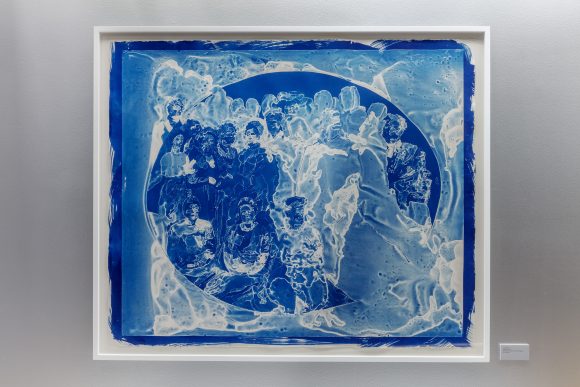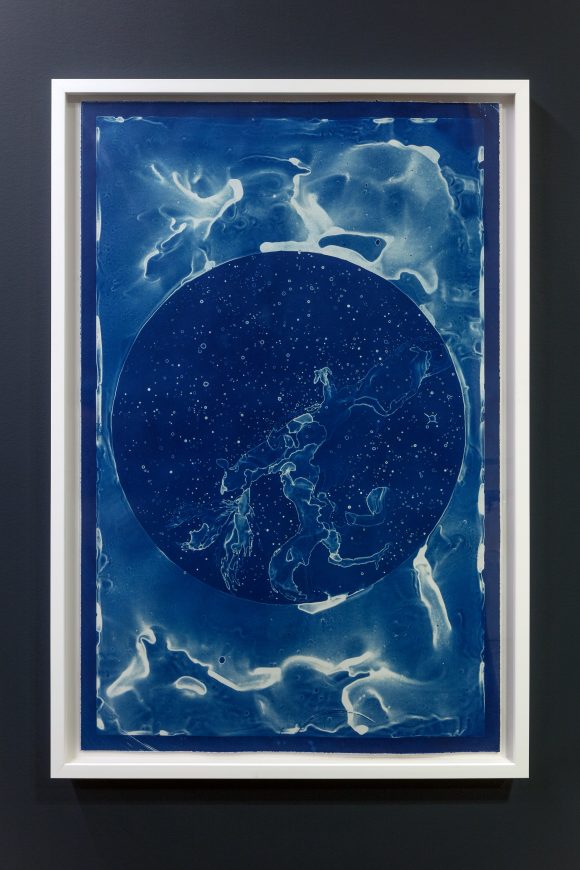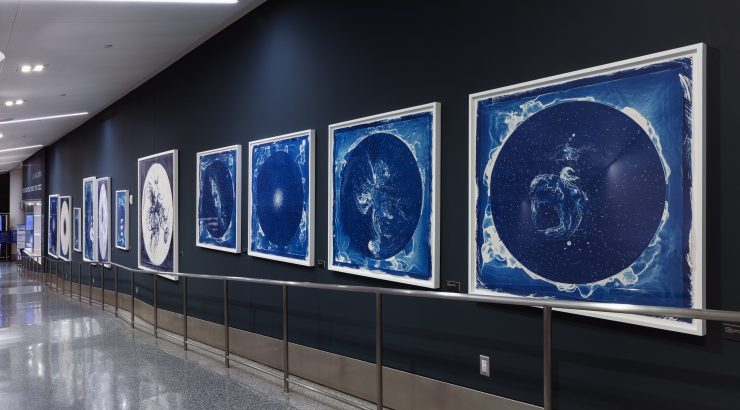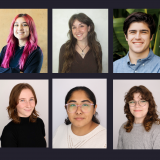Halloran’s Art Exhibition Celebrates Women in Astronomy Displayed at LAX Your Body is a Space That Sees
February 11, 2022
“More than any previous projects I’ve created, I wanted this work to have a far and wide reach and to be be seen by as many people (especial young people) as possible, with the hope that when they engage with the artwork something excites and transforms them to slow down and ask: what is this art about?”
Associate Professor of Art Lia Halloran has gotten her wish, as her exhibition celebrating women’s contributions to astronomy, is currently on display in Terminal 1 at the Los Angeles International Airport (LAX). The exhibition, Your Body is a Space That Sees, was selected by the City of Los Angeles’s Department of Cultural Affairs for installation at Gate 9, and thirteen pieces in the series will be available to ticketed passengers through the fall of 2022, where it is expected to reach eight million viewers.
In 2015, Lia Halloran received a National Endowment for the Arts (NEA) Art Works grant to support the series, which contains a total of forty pieces. The exibit’s large-scale cyanotypes, created using source imagery from the Harvard College Observatory, juxtapose distant, telescopic views of the stars with the human histories and identities behind our greatest astronomical explorations.

Photo by SKA Studios LLC, courtesy of Los Angeles World Airports and City of Los Angeles Department of Cultural Affairs.
To highlight their contributions to astronomical exploration, Halloran titled her pieces after the names and discoveries of the Harvard Computers, the team of women who worked to process data collected by the Harvard College Observatory. The Computers formulated a way to measure distance in space, and created the star-classification system on which our current system is based. Halloran’s work, entitled “Horsehead Nebula, after Williamina Fleming,” honors astronomer Williamina Fleming’s discovery of the Horsehead Nebula in 1888.
“When I first did the research on this project and partnered with the Harvard Observatory, I was completely stunned to find that, hidden in plain sight, some of the most important foundational discoveries of contemporary astronomy were done by this group of women at Harvard, starting in the late 1800’s. In my astronomy coursework as a student it would have been so different and inspiring to hear that the distance of the universe, the chemical content of the stars, and even the catalog that is still used to today to measure the heat and size of stars, was all done by these women.” – Lia Halloran, Associate Professor of Art
Cyanotype is an early photographic printing process, invented in 1842, that creates blue “echoes” of the original image. Ann Atkins, the first person to publish a book illustrated with photographs, used cyanotype printing to create plant photograms.
Drawing from historical accounts of Hypatia of Alexandria, Caroline Herschel, Helen Sawyer Hogg, and the Harvard Computers, Halloran paints impressions of  astronomical images to glean truths from the skies, depicting light in ink on sheets of semi-transparent drafting film. These images were initially captured in photographic emulsion on glass plates. Working in collaboration with the Harvard University Archive to obtain these late 19th and early 20th century astronomical images, Halloran paints her imitations of the images and, using her painted depictions as negatives, places them over large sheets of chemically treated paper to create cyanotypes, or “blueprints” of the images. She sets the overlaid sheets out in the sunlight to develop, creating a print in Prussian blue.
astronomical images to glean truths from the skies, depicting light in ink on sheets of semi-transparent drafting film. These images were initially captured in photographic emulsion on glass plates. Working in collaboration with the Harvard University Archive to obtain these late 19th and early 20th century astronomical images, Halloran paints her imitations of the images and, using her painted depictions as negatives, places them over large sheets of chemically treated paper to create cyanotypes, or “blueprints” of the images. She sets the overlaid sheets out in the sunlight to develop, creating a print in Prussian blue.
“All astronomical imagery offers a look back in time, to the moment when light left the object under study,” wrote Dava Sobel, author of Longitude, Galileo’s Daughter, and The Glass Universe, who provided the wall didactic for this exhibition. “Although the human eye registers only the impression of a moment, an artist or a photographic plate can collect light over a period of hours and present a composite view of entities too faint for the eye to register at a glance.”
Currently on display in Keck Center for Science and Engineering, “Paper Dolls” depicts the Harvard Computers as they were photographed in 1918, outside the Observatory Director’s residence: holding hands like a string of paper dolls.
Your Body is a Space That Sees, first shown in Luis De Jesus Los Angeles, was also featured in Chapman University’s Guggenheim Gallery in 2016.
Artist Ricky Amadour recently interviewed Lia Halloran for the California Art Review. Visit the article for more perspectives on Halloran’s studio work.
Photo by SKA Studios LLC, courtesy of Los Angeles World Airports and City of Los Angeles Department of Cultural Affairs.


